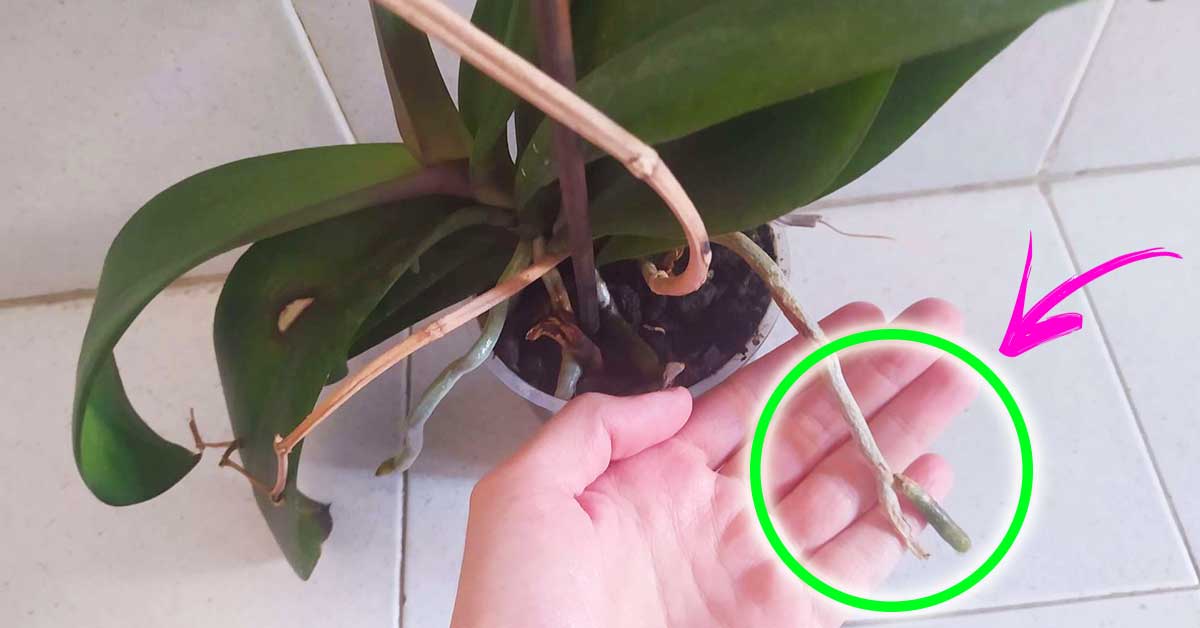ADVERTISEMENT
They are among the most beautiful and beloved flowers in history: our beloved orchids.
Whether it’s a gift we’ve received or a personal purchase, orchids are among the most beautiful plants that can decorate our home.
But unfortunately, they need some attention and care.
It happens that, sometimes, our orchids start to wilt and dry out, even though, apparently, we are following all the proper rules for their care.
One reason may be root rot, a more common phenomenon than you might think.
Let’s find out together what it is and how to fix it.
Attention: in case of doubts, uncertainties or perplexities, ask your trusted florist or gardener for advice .

Causes
The reasons for root rot can be essentially threefold.
Excess water or moisture
In almost all cases, rotten roots depend on a cause that is not always easy to understand: excessive water absorption .
This can depend both on watering too frequently and on having left the orchid in water too long if we water it by immersion.
In addition, sometimes the water stagnates in the saucers which can raise the humidity level and compromise the normal development of the roots.
Alteration of the terrain
Another cause may be a change in the composition of the soil.
Many times we use fertilizers or fertilizers that are not specific to these plants for our orchids.
The result is an alteration in soil pH that can sour.
And it is precisely the acidic soil that damages the roots, often leading them to rot.
Soil that is too compact
This is the rarest hypothesis, but equally possible.
When the soil used is too compact, it can suffocate the roots by preventing the passage of air.
Sometimes, the soil becomes too compact over time after watering it a few times.
How to Notice
To find out if your orchids really have rotten roots, you can remove them from the vase, clean them from the soil, and examine them.
If the roots look dark and softer than normal, then they are rotting.
A trick to always keep the condition of your orchid’s roots under control is to use transparent vases.
This way, you can check if the roots are starting to rot simply by looking through the pot, without having to dig up the plant.
Remedies
To prevent
The most effective remedy is undoubtedly prevention.
You can prevent plant rot by avoiding the three different causes and therefore paying attention to watering, the fertilizers and fertilizers used, and the compactness of the soil.
Nip in the bud
If the roots are now rotten, you must follow a precise procedure in order to save your orchid.
First you have to soak your plant for about an hour, in order to soften the roots and make the operation easier.
Let the roots dry and remove them from the soil, trying to pull them out very carefully.
Then, remove the last remnants of soil by placing the roots under running water.
In the meantime, take the vase and wash it with water and white vinegar to kill viruses and bacteria.
At this point, it’s time to… cut!
Take a pair of scissors or shears and cut off any roots that look rotten, dry, hollow, or broken.
NB: Before using the scissors and scissors, make sure to sterilize them so as not to compromise the health of your orchid.
Disinfect & Replant
After cutting off the rotten roots, sprinkle cinnamon over the remaining roots, which is a natural antifungal and will prevent any remaining bacterial or fungal residue from re-affecting your plant.
Then, put the plant back in the original pot and fill it with new soil.
Pour the new potting soil very carefully so as not to damage the roots.
ADVERTISEMENT
ADVERTISEMENT
